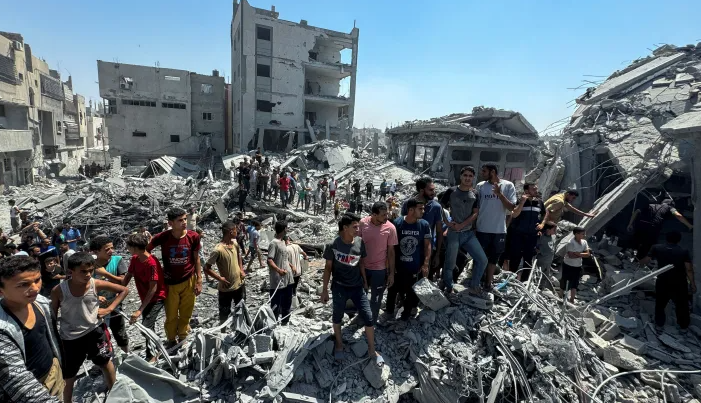
The hostilities between Israel and Iran are expressed mostly in proxy conflicts, computer warfare, as well as other regional antagonisms, and has not yet resulted in a hot war between the two nations. However, in addition to the ongoing tensions between Israel and Iran, there are a number of conflicts in the Middle East which include Syria, Yemen, Iraq and others that involve both parties’ interests. These conflicts possess indirect and direct economies-related environmental impacts.
Should increases in tensions take place, or should a larger scale confrontation take place between the two countries, the following environmental consequences could take place:
1.Environmental Pollution from Warfare
Air Pollution: Military campaigns which involve the use of heavy bombers and missiles or even damage to essential installations produce toxic and harmful particulates, gases and chemicals into the environment. Detonations produce dust and clouds along with air pollutants that are health hazards and long-term environmental threats.
Destruction of Land: The forces of shockwaves and the effects of wheeled armored units on the earth’s surface can reduce the quality of the soil and cause its erosion thus making the land unfit for farming activities.
2. Adverse Effects on the Ecosystem
Destruction of natural settings: War brings destruction even in the serene and beautiful landscapes such as forest areas, marsh lands, desert etc which leads to eradication of many species. This certainly affects the population of plants and animals within the area.
Disruption of Activities of Animals: Warfare leads to extreme noise, destruction and pollution caused by various means of combat, and such situations lead to the migration of some animals from their habitats thereby affecting some food chains.
3. Reduction of Available Resources
Water Shortages: Wars and civil unrest help aggravate already limited sources of water especially in the Middle East region. Damage to historical sites and resources or redirection of water reserves for combat purposes

Israel’s Bombing on Lebanon
1.Air Pollution and Health Issues
Immediate Health Impacts: Bombardments, detonations, and burning of facilities causes a release of toxic substances like carbon monoxide, sulfur dioxide, and other respirable particulates. These pollutants are capable of causing illnesses of the respiratory system and the circulatory system as well as cancers of the those populations.
Long-term Health Risks: Persistent exposure to polluted air mainly in war-torn regions is associated with chronic airflow restriction, higher incidence of asthma, and other chronic illness burden.
2. Water Contamination and Scarcity
Drinking Water Shortages: The instability leads to malfunction of water treatment facilities and distribution networks creating adequate supply of potable water impossible. Use of such water raises the chances of cholera, dysentery, typhoid fever and other related illnesses.
Hygiene and Sanitation Issues: As a result of fighting there are areas where there are no clean safe water supply, which lowers the hygiene standards resulting to high infection and disease transmission within those areas.
3. Food Insecurity
Agriculture Disruption: Wars lead to the destruction of agricultural lands, food supply lines are often disturbed, and land gets polluted with chemicals which can no longer be utilized for agriculture. Such scenarios bring about food deficiencies and starvation especially to the at-risk populations.
Famine: Extended warfare can contribute to starvation because food recommended for local sustainable economies is not produced and food exports are limited or unacceptable.
4. Displacement and Refugee Crises
Mass Migration: The depletion of the environment will compel millions of individuals to leave their places of residence, creating refugee crises. Refugee camps remain premised or unoccupied due to lack of adequate supply of essential goods such as clean water, food and medical care to the confined populations.
Strain on Resources: Occasionally, refugees want to stay in a place which has a favorable climatic environment, but the area has scarce resources and very few natural features like land and water available.

Displacement caused by the war
published by : Vihaan Gandhi & Dhruv Parekh






